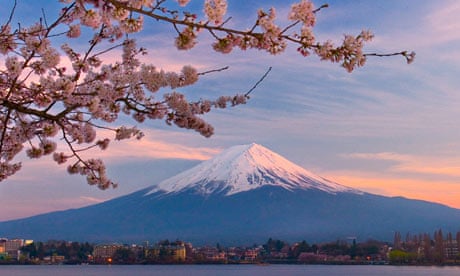Popular Japanese culture has often baffled the western world: manga, schoolgirl fashion, karaoke and trimming bonsai trees may seem inexplicable from the British town hall. But now local authorities are taking lessons from Japan on how to use popular culture, regional history and local produce to promote regions across the country.
The Japan Local Government Centre, which boasts an office in central London, is working to share the lessons of Japanese local authority projects with their counterparts in the UK. Japan, the centre claims, is facing the same national and local problems as other westernised countries, including governance, public service reform, demographic change and creating a low carbon society.
Recent schemes to connect local residents to their communities in Japan have sought to exploit regional strengths to create a new identity – including designing pop art characters to represent the area. It has been a success, with residents reporting a sense of ownership and pride in their city.
Nerima city, a ward of Tokyo, is the birthplace of Japanese animation, one of the country's biggest cultural exports. With more than 90 production companies based in the region, it is the city in which anime masters Isao Takahata and Hayao Miyazaki cut their teeth. Yet a 2009 survey found that half of local residents knew nothing about its history or cultural importance.
In an attempt to revitalise the area through its biggest industry, the local authority launched an official anime homepage in 2010, describing the history of the industry and showcasing interviews with designers. It was so popular the council commissioned the design of a new anime character, named Nerimaru, as a city mascot.
"Pop culture such as manga and anime, and using them for local produce promotion, has been a tradition in Japan for a number of years," explains Keith Kelly, a researcher at the centre. "Japan has a long tradition of pride in products and food. Wherever you go in Japan all areas have meibutsu (famous local products) so these products already have a well-known history. Cashing in on manga and anime has been a recent adapting of this tendency, another meibutsu for which to raise the presence of the area.
The idea was so successful it spread. After a popular manga exhibition in 2000, the region of Iwate in the north-east of the country decided to launch its own manga anthology, published in January this year. It is published by the local authority, drawn by local artists to cover local issues, and is intended to showcase the region's most attractive features including dramatic scenery and Japan's famous hospitality.
The lwate prefectural government had planned to press just 10,000 copies of the first volume, but pre-publication sales topped 13,000. The impact of the project in terms of "soft power diplomacy" and raised profile for the region was considerable.
Now many areas of Japan have their own character, or pop culture identity, and the process of designing the character has involved residents. "Other areas have asked the local community to get involved by suggesting ideas. Children have also been invited to come up with characters for adoption in a campaign. Very often the public will be asked to name the character," Kelly explains.
Kelly says that there are key lessons for British councils by watching the success of pop culture campaigns. "There is definitely something about local pride and identifying with local culture which works well in Japan," he says. "Japanese local authorities tap into this more than most UK local authorities which have a very corporate identity."
Creating a unique identity could help boost internal tourism in the UK, Kelly suggests. He admits there may be a "Daily Mail test" over the diversion of public funds to building a cultural identity. However, he says, this could be surmounted if local artists were involved, "employed in the local economy to promote their area". The economic benefits of attracting new people to the area to consume local culture are clear.
There are risks. In the Nara region of Japan, a mascot called Sento-kun designed to represent the 1,200th anniversary of the area proved controversial. The Buddhist-style cartoon icon with deer antlers, intended to symbolise the animals Nara city is famous for, attracted a lot of criticism. However, local government officials said that the debate around the character attracted publicity worth billions of Yen.
Kelly warns British authorities that deciding to invest in an identity may seem a difficult decision, but will pay off. "It's a chicken and the egg situation," he says. "If you don't invest in local identity as a way of investing in the local economy then there are not local products being sold on the markets to grow the local economy, in the form of job creation and getting people into the area and spending money."
This content is brought to you by Guardian Professional. Join the local government network for more comment, analysis, best practice, events and job vacancies direct to your inbox

Comments (…)
Sign in or create your Guardian account to join the discussion